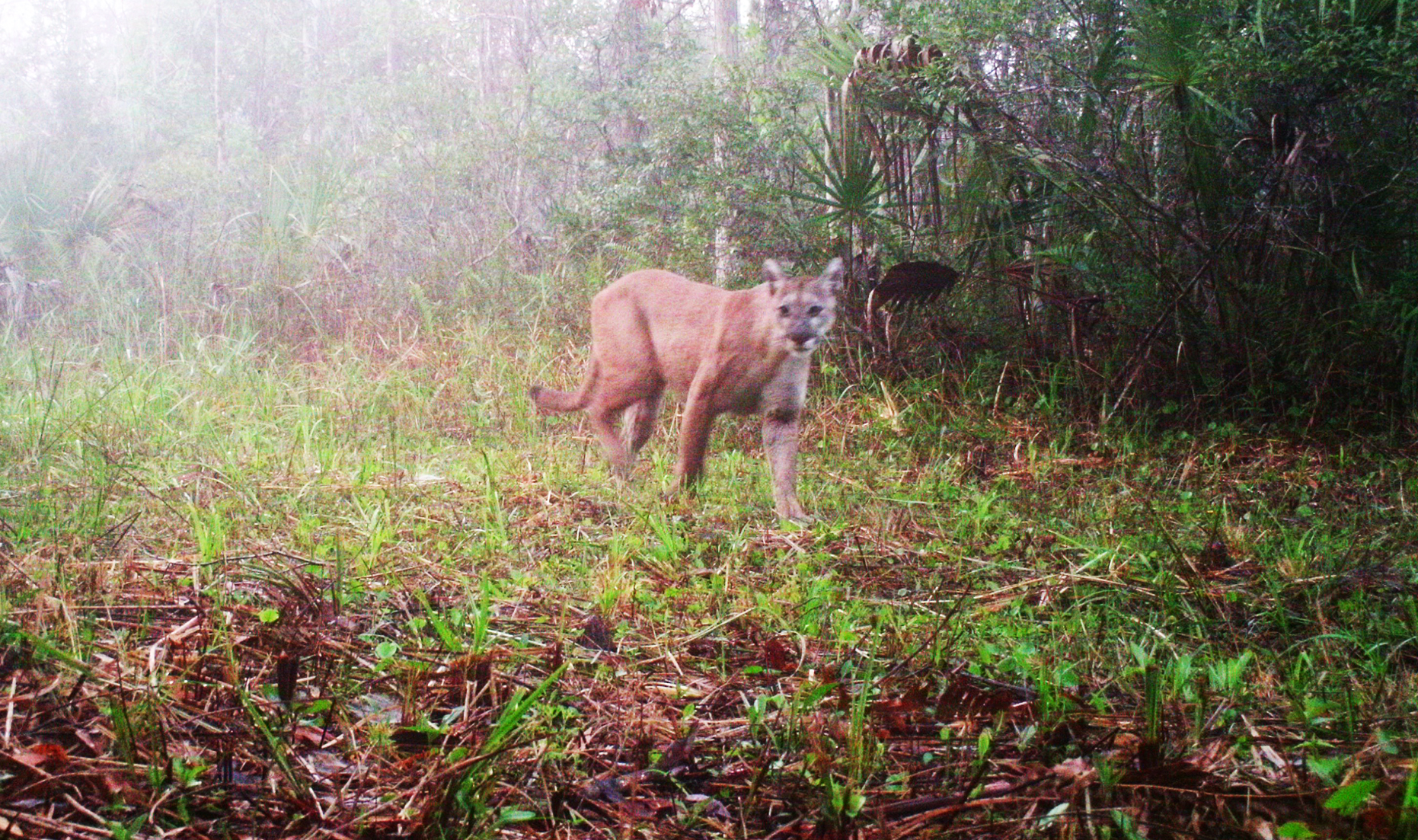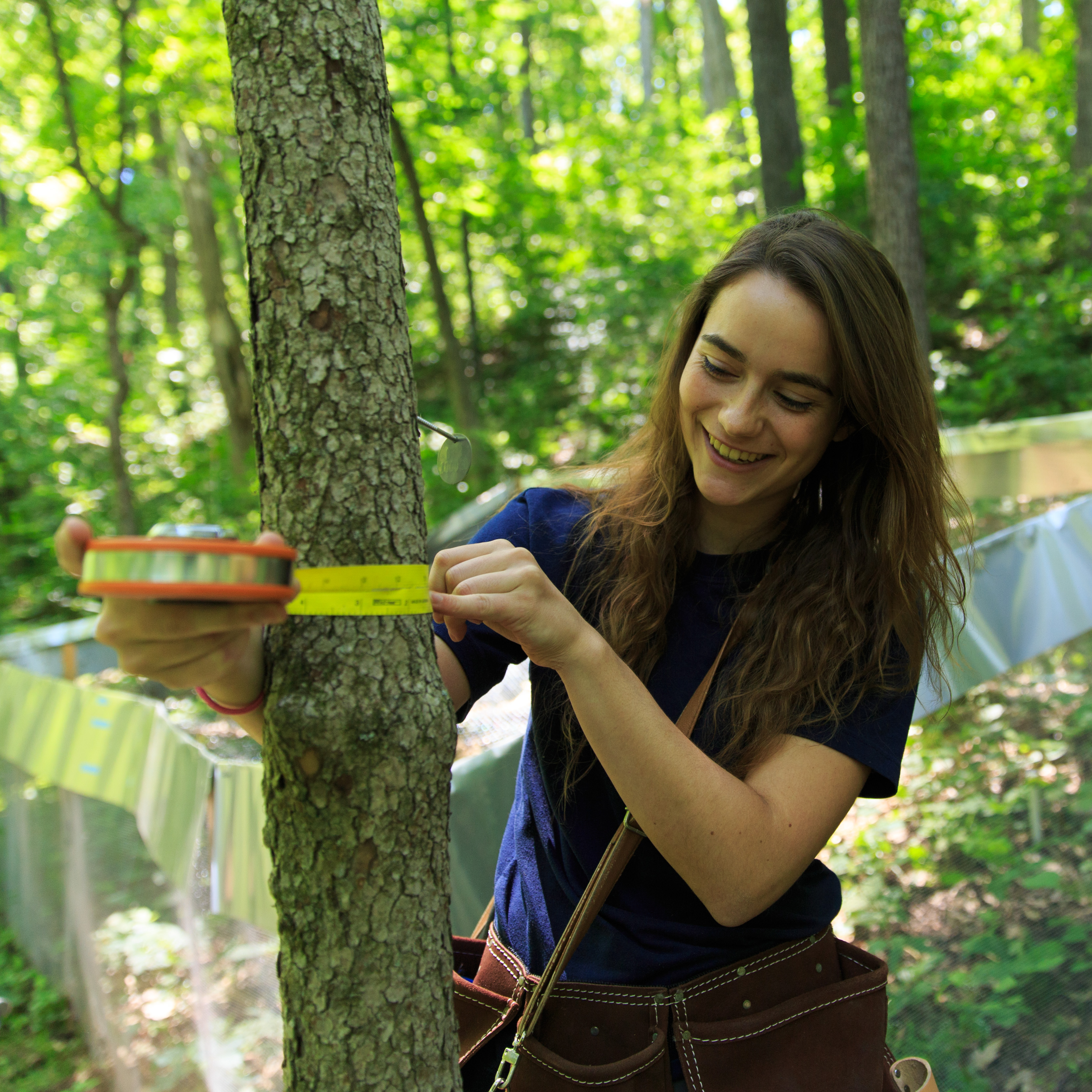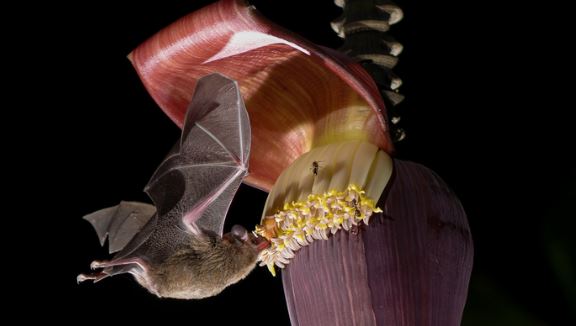The platypus is possibly the most irreplaceable mammal existing today. They have a unique combination of characteristics, including egg-laying despite being mammals, venomous spurs in males, electroreception for locating prey, biofluorescent fur, multiple sex chromosomes, and the longest evolutionary history in mammals.
Tag: Ecology
New species of owl discovered in the rainforests of Príncipe Island, Central Africa
A new species of owl has just been described from Príncipe Island, part of the Democratic Republic of São Tomé and Príncipe in Central Africa.
Half of the Data Deficient Species May Be Threatened with Extinction
Often we simply do not know enough about a species to know how it is doing. On the recognized red list from the International Union for Conservation of Nature (IUCN), thousands of plants and animals are listed as “data deficient.”
Climate Change Double Whammy Causes Unexpected Effects in Pacific Mussels
Comparative physiologists studied how two aspects of climate change—warming temperatures and increasingly acidic waters—may affect the ecologically important Pacific blue mussel (Mytilus trossulus), a foundational species in the intertidal environments of the northern Pacific Ocean.
It’s Not the Heat, It’s the Humidity: Water Loss Hurts Bees Most in the Desert
Digger bees lose large amounts of water during flight, which compromises their activity period and survival in the desert heat. Researchers from Arizona State University will present their work this week at the American Physiological Society (APS) Intersociety Meeting in Comparative Physiology: From Organism to Omics in an Uncertain World conference in San Diego.
Lecture to discuss wetlands’ ability to alleviate some pressures of climate change
Christopher Craft will cover wetland restoration during ASA, CSSA, SSSA International Annual Meeting
How Pitt biologists are making fieldwork more equitable
In a new publication, a team of biologists share their process for crafting a manual for field research that prioritizes safety for researchers from marginalized groups.
The bolder bird gets (and keeps) the girl
. In a paper published today in Royal Society Biology Letters, researchers at the Woods Hole Oceanographic Institution (WHOI) demonstrate a clear connection between personality in wandering albatross (Diomedea exulans) and the likelihood of divorce. Though the link between personality and relationship outcomes in humans is well-established, this is the first study to do so with animals.
Chemical fingerprints could land the biggest catch: seafood fraudsters
New technology developed by South Australian scientists is tracking the origins of seafood in a bid to combat fraudulent labelling and improve sustainability. Chemical fingerprints found in the bones and shells of marine life is key to knowing which ocean they come from.
These mice grow bigger on the rainier sides of mountains. It might be a new rule of nature.
Scientists studying mice from the Andes Mountains in Patagonia noticed something they couldn’t explain: the mice from the western side of the mountains were bigger than the ones from the east, but DNA said that they were all from the same species.
High plant diversity is often found in the smallest of areas
It might sound weird, but it’s true: the steppes of Eastern Europe are home to a similar number of plant species as the regions of the Amazon rainforest.
Keeping Kermit healthy
A world-first study from the University of South Australia shows that while Bd can significantly reduce in captive frogs, captivity can have negative consequences for the frogs’ protective skin microbiota, providing new insight into diversity management.
Hydropower dams induce widespread species extinctions across Amazonian forest islands
Hydropower developments should avoid flooding forests to minimise biodiversity loss and disruptions to ecosystems in Amazonian forest islands, new research from the University of East Anglia (UEA) finds.
The first trees: Preserving ‘the world’s oldest forest’ in Upstate New York
Researchers from Binghamton University are working to preserve the world’s oldest forest, located in researchers from Binghamton UniversityCairo, N.Y.
Isle Royale Winter Study finds wolves living their best lives, moose not so much.
More pups, increased predation and pesky parasites are among highlights of the 63rd annual Winter Study, which focuses on the island’s wolf and moose populations.
Scientists issue plan for rewilding the American West
As the effects of climate change mount, ecosystem restoration in the US West has garnered significant public attention, bolstered by President Joe Biden’s America the Beautiful plan to conserve 30% of US land and water by 2030. Writing in BioScience, William J. Ripple and 19 colleagues follow up on the Biden plan with a proposal for a “Western Rewilding Network,” comprising 11 large reserve areas already owned by the federal government.
Pathogenic microbes in drying soils could present public health threat
Soil-borne pathogens are resilient to stressful conditions, and may be more likely than non-pathogenic microbes to survive the prolonged dry spells that are projected to persist regionally across many parts of the globe.
Nitrogen Footprint: Heavy Pollution and Resource Losses Due to Liquid Manure
Factory farming for meat production is harmful to the environment. In addition to its direct emissions of methane, its use of liquid manure releases climate-damaging nitrogen compounds such as ammonia and nitrous oxide into the atmosphere and pollutes the groundwater with nitrates. Researchers at the Karlsruhe Institute of Technology (KIT) have analyzed how the liquid manure produced by livestock farming, which is often used as fertilizer, affects its nitrogen footprint. They showed that the nitrogen pollution caused by liquid manure from the production of beef is three times higher than that for pork and eight times higher than that for poultry
Experts predict top emerging impacts on ocean biodiversity over next decade
Lithium extraction from the deep sea, overfishing of deeper-water species, and the unexpected ocean impacts of wildfires on land are among fifteen issues experts warn we ought to be addressing now.
Maine Wild Blueberry Fields Experience Warming Differently Depending on Location, Season, Time, Study Finds
The location, season and the time of day influence how fast temperatures are rising at Maine wild blueberry fields due to climate change, according to a new University of Maine study.

Panthers now No. 1 predator of white-tailed deer in Southwest Florida
A new study by the University of Georgia found Florida panthers are the No. 1 cause of mortality for white-tailed deer in Southwest Florida.
Research Reveals the Science Behind This Plant’s Blue Berries
On a beautiful fall day in 2019, Miranda Sinnott-Armstrong was walking down Pearl Street in Boulder, Colorado when something caught her eye: a small, particularly shiny blue fruit, on a shrub known as Lantana strigocamara.
Monarch butterfly populations are thriving in North America
For years, scientists have warned that monarch butterflies are dying off in droves because of diminishing winter colonies. But new research from the University of Georgia shows that the summer population of monarchs has remained relatively stable over the past 25 years.
Wildlife’s Worm-Wide Web
Many of us try to repress the thought of them, while others have come to accept them. Whatever your take on parasites is, they can tell scientists a lot about ecology, health and the environment.

The space between us
Tree beta diversity — a measure of site-to-site variation in the composition of species present within a given area — matters more for ecosystem functioning than other components of biodiversity at larger scales. The finding has implications for conservation planning.
Stress Among Wild Life
“I am stressed!” We have all said this sentence many times. Stress is a widespread phenomenon among humans.
A family of termites has been traversing the world’s oceans for millions of years
A new study has mapped out the natural history of drywood termites—the second largest family of termites.
Light pollution can disorient monarch butterflies
Besides planting milkweed in the garden, people interested in helping monarch butterflies might want to turn off the porch light.
Are New Carbon Sinks Appearing in The Arctic?
Global warming can result in the spread of peatland vegetation in the Arctic. An international research group has discovered signs of ‘proto-peat’, which may be the beginning of new peatlands.
Spider can hide underwater for 30 minutes
A tropical spider species uses a “film” of air to hide underwater from predators for as long as 30 minutes, according to faculty at Binghamton University, State University of New York.
These stunning 3D models of coral reefs are a crucial research tool
Martínez Quintana has created stunning 3D digital models that visualize the surface of coral reefs in painstaking detail. The artful re-creations aren’t just beautiful: They’re also filled with data on the distribution of young corals, known as recruits, that scientists are analyzing.
Rare, endangered insects and spiders illegally for sale online
Endangered and threatened insects and spiders, as well as common species that provide valuable ecological services, can be easily purchased – without adequate oversight – through basic internet searches, according to a new Cornell University study.
Freshwater habitats are fragile pockets of exceptional biodiversity
While much research has focused on the striking differences in biodiversity between tropical and temperate regions, another, equally dramatic, pattern has gone largely unstudied: the differences in species richness among Earth’s three major habitat types – land, oceans and freshwater.
Wullschleger receives Commitment to Human Diversity in Ecology Award
Stan Wullschleger, associate laboratory director for biological and environmental systems science at the Department of Energy’s Oak Ridge National Laboratory, is the recipient of the 2022 Commitment to Human Diversity in Ecology Award from the Ecological Society of America, or ESA.
Lowering the temperature on a hot topic: a climate change primer
Earth Day presents a good opportunity to help clear up some essential questions about climate change; what it is, what is responsible and how we know it’s real.
Matt Ajemian, Ph.D., Receives Prestigious NSF CAREER Award
Matt Ajemian, Ph.D., has received a $1,103,081 NSF CAREER grant for a project that will build fundamental knowledge on where and when large shell-crushing predators feed in order to ensure a sustainable future for shellfish species. Further, the work can provide guidance to shellfish restoration programs that are currently “flying blind” with respect to predation risk.
A midge fly can be a source of currently used pesticides for birds, bats
Researchers reporting in ACS’ Environmental Science & Technology have observed that non-biting midge larvae accumulate contemporary pesticides from polluted water and retain the substances into adulthood. As a result, animals that eat the adult flies could consume small amounts of pesticides daily.
Evolution in Chicago’s clover: DePaul University researchers help chart global human impact on nature
Jalene LaMontagne, associate professor of ecology, and Windsor Aguirre, associate professor of evolutionary biology, are among hundreds of researchers who collected clover in 160 cities all over the world. The research, published this week in the journal “Science,” offers insight into how urbanization is transforming the genetic properties of plants and animals around us.
Revealing the ramifications of ocean acidification for coralline algae
Scientists have long suspected that coralline algae are particularly sensitive to changes in ocean chemistry. Now, researchers have found that most species of coralline algae studied are negatively affected by ocean acidification.
After California’s 3rd-largest wildfire, deer returned home while trees were ‘still smoldering’
While many animals have adapted to live with wildfires of the past — which were smaller, more frequent and kept ecosystems in balance across the West — it’s unclear to scientists how animals are coping with today’s unprecedented megafires. A team of researchers tracked a population of black-tailed deer before, during and after the 2018 Mendocino Complex Fire and found that most of the deer returned home within hours of the fire, while trees were still smoldering.
Carnivores may adjust schedule to avoid each other, researchers find
Just as humans may leave their home five minutes early to avoid a talkative neighbor or depart work late to avoid a rude coworker, carnivorous mammals may go out of their way to avoid other species.
Study reveals extent of impact of human settlement on island ecosystems
Research has shed new light on the impact of humans on islands’ biodiversity. The findings show how human colonization altered forest across the islands of Macaronesia including the loss of landscape authenticity.
Expert in Ecological Applications of AI Joins Newly Announced Imageomics Institute
Chuck Stewart, an expert in the ecological applications of computer vision, is part of the newly created Imageomics Institute, founded with a $15 million grant from the National Science Foundation to use images of living organisms to understand biological processes.
Iowa State’s Schulte Moore named 2021 MacArthur Fellow
Lisa Schulte Moore, a professor of natural resource ecology and management at Iowa State University, has been named a 2021 MacArthur Fellow for her groundbreaking research as a landscape ecologist building more sustainable and resilient agricultural systems. The prestigious awards, sometimes called “genius grants,” identify scientists, artists, entrepreneurs and others who have demonstrated exceptional creativity and who show promise for important future advances.
Diversity matters
Microorganisms, plants, and animals accomplish great feats every day. For example, by decomposing material, producing plant biomass, or pollinating flowers, they keep nature ‘up and running,’ thereby securing the livelihood of humans.

Bat guts become less healthy through diet of ‘fast food’ from banana plantations
Nectar-feeding bats foraging in intensively managed banana plantations in Costa Rica have a less diverse set of gut microbes in comparison to bats feeding in their natural forest habitat or organic plantations, reveals new research published today in Frontiers in Ecology and Evolution.
Genotyping Reveals Significance of Mesophotic Reefs for Florida Keys’ Coral Recovery
Researchers are the first to compare the genetic structure and genomic diversity of paired shallow and upper mesophotic coral sites in the Northern and Southern Dry Tortugas and the Lower and Upper Florida Keys. Results suggest that while vertical connectivity between paired shallow and mesophotic populations can vary, certain mesophotic coral populations are important for maintaining the long-term survival of this ecologically important coral species throughout the Florida Keys and should be considered in future management strategies.
Living laboratory, biodiversity hub: The Oak Ridge National Environmental Research Park
Nestled at the intersection of eastern Tennessee’s Anderson and Roane Counties, the Oak Ridge National Environmental Research Park is a living laboratory and a major resource for conducting ecological studies.
Behold the humble water flea, locked in a battle of mythological proportions
In Greek mythology, Hydra was a monstrous water serpent that lived in a swamp and terrorized nearby residents. When intrepid Hercules sliced off one of Hydra’s multiple heads, two more heads grew back in its place. This counterintuitive result — when an action taken to reduce a problem actually multiplies it — is known as a hydra effect.
Study reveals gophers’ biofluorescence
Researcher discovers that the underground species has a secret glow